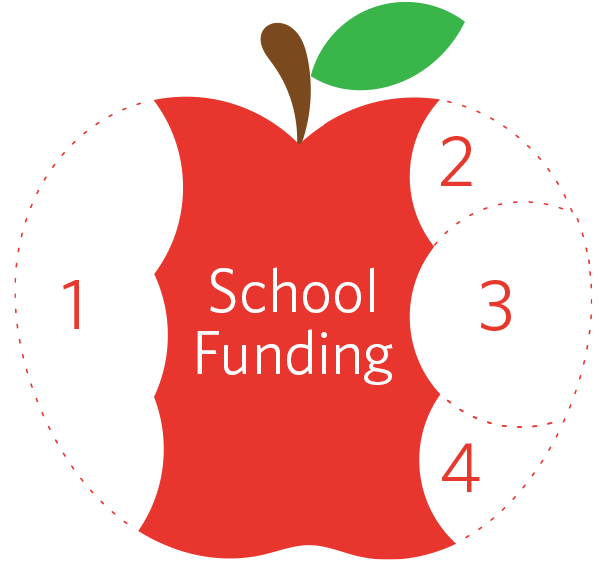Core issues with school funding in Washington State
School districts are facing big budget challenges
That’s because over the past few years, Washington has seen some big changes in the way the state funds its public schools. While the Legislature has invested more money into K-12 education, they have also limited a community’s ability to support programs and services that students and families rely on. This has left schools in a sticky situation, with a funding solution that is a few apples short of a barrel.
To get to the core of this funding challenge, it’s important to understand the primary ways schools get the money they need to operate. There are three main sources of funding for schools: the federal government, the state government, and local funding measures, in the form of bonds (funds for building) and levies (funds for learning).
The Funding “Fix” is a Few Apples Short of a Barrel
Click on a barrel to learn what’s happening.
The Funding “Fix” is a Few Apples Short of a Barrel
Click on a barrel to learn what’s happening.

2007
In 2007, two Washington families filed a lawsuit against the state, alleging that it was not meeting its constitutional duty to sufficiently fund public education. The case made its way to the State Supreme Court, with justices ruling in favor of the plaintiffs. The Legislature was ordered to fix the state’s public education funding system and fully fund “basic education.”

2018
As a result, in 2018, the Legislature drastically changed the way schools are funded, creating a theoretical model school and assigned resource allocation formulas to school districts based on this “prototypical model.” The changes meant more state-funded dollars were coming into the education system, but local levies were limited to collecting $1.50 per $1,000 of assessed property value.

2019
Later that cap was raised to $2.50 per assessed property value. The limited local funds districts are now able to collect are nowhere near the dollars local communities were used to raising for programs and activities they valued. Things like athletics, band, choir, drama, special education services, updated technology, extra teachers and support staff, which used to be covered by local levies, are not part of “basic education” and are left underfunded or completely unfunded.

NOW
Years later, the changes continue to upset the apple cart, and school districts are still sorting through the education funding changes. Big gaps remain in money for special education, school counselors, nurses, and other critical services. This has created significant inequities among school districts (even among neighboring school districts) all across the state.
Four major factors have caused inequities among districts and overall reductions state-wide to funding for schools:

1. Limitations to Local Levies
The ability to fund education locally through levies has been severely impacted with some districts losing big chunks of their total budget through the cap of $2.50 per $1,000 assessed property value.
2. Cuts to Local Effort Assistance (LEA)
Districts with lower property values are receiving less equalizing funding from the state, known as LEA funds.
3. Less $ for Long-serving Teachers
A new “one-size-fits-all” teacher salary allotment from the state means districts no longer receive additional state funds to compensate long-serving teachers with higher educational attainment.
4. Regionalization Calculations
Regionalization calculations give less money to districts with a lower cost of living.
Not as easy as apple pie
The changes, coupled with declines in student enrollment (also a driver of state funding) have caused many districts to face significant challenges balancing their budgets. There’s just not enough money for all of the important needs associated with providing kids with a quality education. How do you like them apples?
How are districts managing the situation?
- They are advocating for changes because the state still does not fund the true cost of education (special education, staff salaries, facilities maintenance and updates, technology, extracurriculars like athletics and performing arts, etc.)
- They are spending down reserves, which is not a sustainable solution
- They are gearing up for or already making significant budget cuts and staffing reductions (because funding model changes have reduced the flexibility in how districts can raise and spend money)
- They are managing their budgets wisely and adapting to the new normal working to provide sustainable budgets, even in the midst of this changing financial landscape
- They are sharing with their communities that the ability to collect local funding for schools is greatly diminished, yet levies remain a critical resource – in some cases representing 20-30 percent of a school district’s overall budget
What can you do to help?
- Since every district across the state is impacted in a different way by the funding changes, there is no one solution, aside from changes at the legislative level.
- Contact your local school district to ask about the tough choices administrators are making and what you can do to help.
Bottom Line
Without a legislative fix, school districts will be forced to slice their budgets, which means potential cuts to school programs and staff. Contact your local school district to learn more about the budget challenges faced in your community.
Historical Resources
